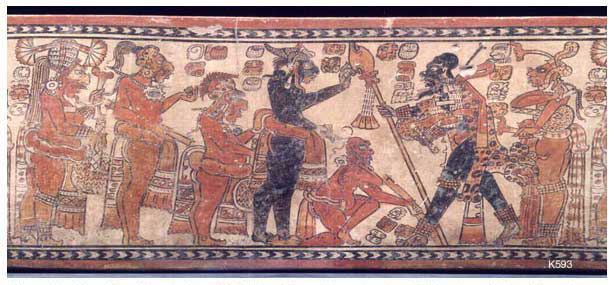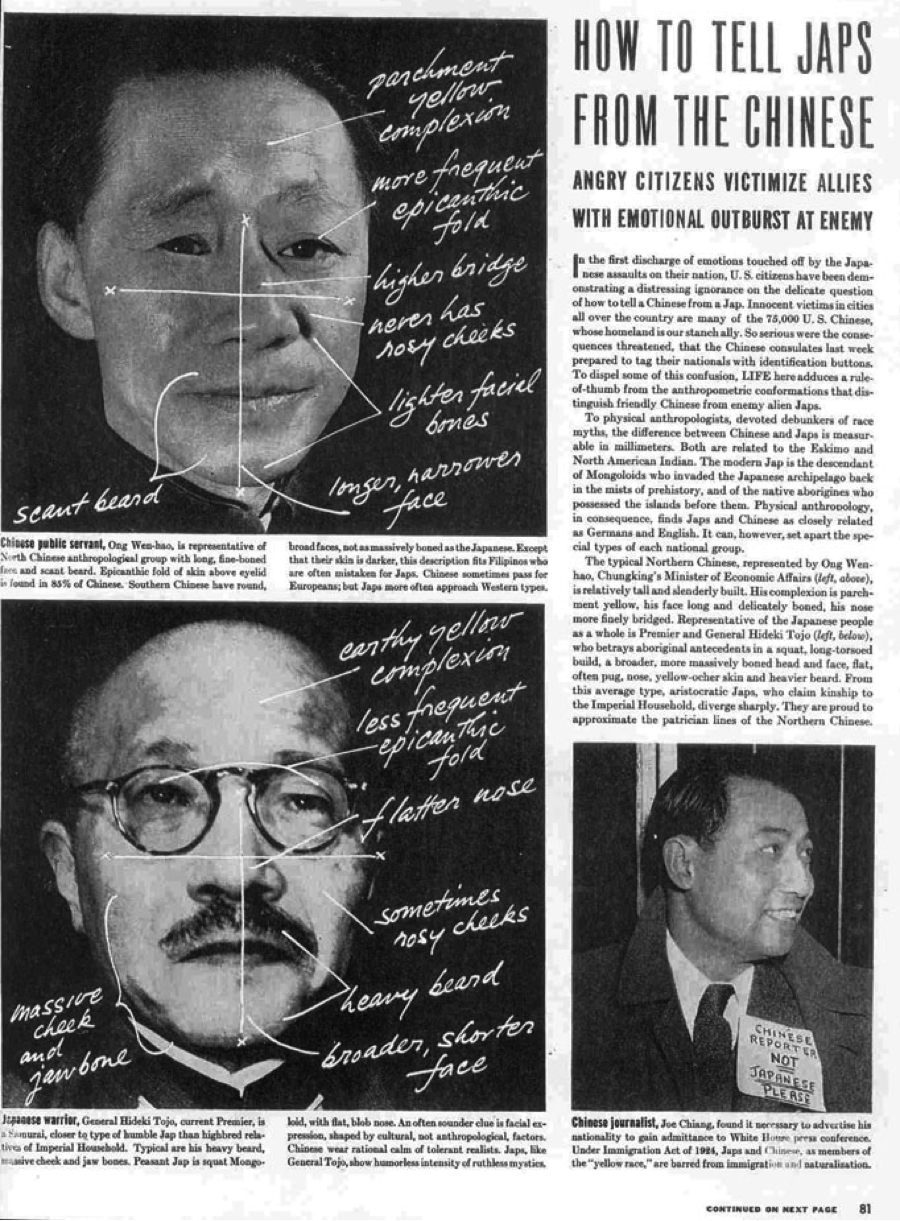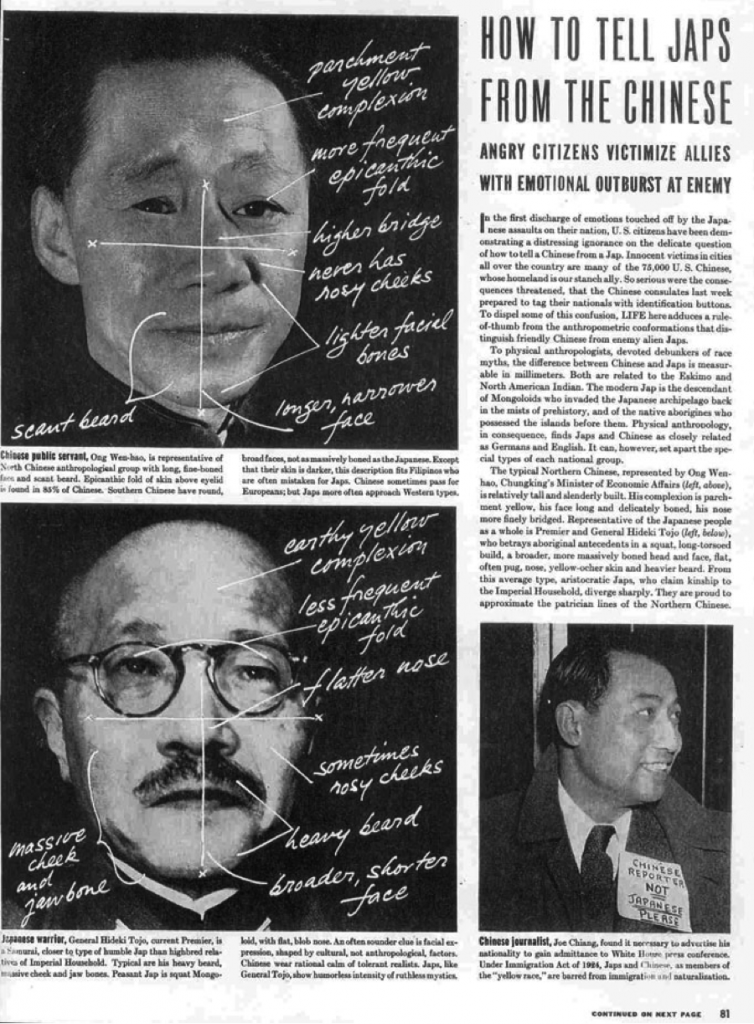The Nephite Racism Towards the Lamanites
Last week we had a reader write in asking for an explanation regarding the meaning of the wording in the chapter heading of 3 Nephi chapter 2:
“Converted Lamanites become white and are called Nephites.”
Following is my response to the reader’s inquiry that Paul and I thought might be “blog worthy” Let me know what you guys and gals think. For those interested, click here to listen to a lively podcast discussion with Dan Wotherspoon PhD in Religion, Brian Dalton (Mr. Deity), and Dr. Charley Harrell (author of ‘This is my Doctrine: The Development of Mormon Theology) regarding this very issue:
When looking at the Book of Mormon, it is important to understand that the headings before each chapter are not part of the original revelation but were added much later as an editor’s summary, not Joseph Smith’s. That however doesn’t answer the issue. If one holds to the historicity of the Book of Mormon, there are a few ways in which the racially charged passages of the Book of Mormon can be interpreted.

When the descriptor “Lamanite” is used in the Book of Mormon, it is used in two different ways:
- A certain belief or orthodoxy. That is, to be a Lamanite, one has to believe that Nephi mistreated Laman and Lemuel and that the leadership of the family, following Lehi’s death, should have been passed on to the elder brothers, Laman and Lemuel.
- Skin color
Let’s explore the first descriptor, that of belief.
Mosiah 10:12-13 reads:
” …Believing that they were driven out of the land of Jerusalem because of the iniquities of their fathers, and that they were wronged in the wilderness by their brethren…that they were wronged while in the land of their first inheritance…”
Alma 3:11 reads:
“And it came to pass that whosoever would not believe in the tradition of the Lamanites, but believed those records which were brought out of the land of Jerusalem, and also in the tradition of their fathers, which were correct…were called Nephites. “
In 3 Nephi 3:10-11 we find Nephite dissenters, who had joined forces with the Lamanites, claiming the same foundational story as the “Lamanites”. Yet, there is no mention of the Nephite dissenters’ color changing:
“…that this my people may recover their rights and government…”
Now, let’s explore the second Lamanite descriptor, that of skin color. The issue of skin color first raises its head in 2 Nephi 5:21:
“And he had caused the cursing to come upon them…wherefore as they were white, and exceedingly fair and delightsome…the Lord God did cause a skin of blackness to come upon them.”
We also read in Jacob 3:8 the prophet, Jacob, saying:
“O my brethren, I fear that unless ye shall repent of your sins that their skins will be whiter than yours, when ye shall be brought with them before the throne of God.”
There are several ways to approach the skin color as it appears in the Book of Mormon. I will provide you with a few possibilities and then let you know what I believe is the most plausible. First, the skin color is seen as metaphorical. There is Biblical precedence for this view:
Job 30: 30
“My skin is black upon me, and my bones are burned with heat.”
Jeremiah 8:21
”For the hurt of the daughter of my people am I hurt; I am black; astonishment has taken hold on me.”
Lamentations 4:8
Speaking of the estate of Zion as being pitiful because of sin and iniquity “Their visage is blacker than a coal….”
Lamentations 5:10
“Our skin was black like an oven ….”
Joel 2:6
“…all faces shall gather blackness.”
Nahum 2:10
”…and the faces of them all gather blackness.”
Here we see the blackness as either a metaphor or an idiom for sin or for sorrow/gloom. Nephi could have been using the same idioms. The problem with this view is that while the Biblical text reads as metaphor, the verses in the Book of Mormon that speak of skin color do not.
The second approach is a literal approach. To hold this view one would have to believe that God actually does change people’s skin color when he curses them. To believe this, one has to believe that God himself is racist. I, being a descendant of Mayan ancestry, would also have to hold to the idea that I am cursed as I have dark skin. I do not hold to this view.
The third possibility to explain skin color in the Book of Mormon is that the Nephites were racist. This appears to be the most plausible view, and a close reading of the Book of Mormon appears to uphold this view. We get a hint of Nephites being racist toward the Lamanites in descriptions made of the Lamanites by the Nephites:
Jarom 1:6 “and they [the Lamanites] were exceedingly more numerous than were the Nephites; and they loved murder and would drink the blood of beasts.”
Enos 1:20 “…and they [the Lamanites] became wild, and ferocious, and a blood thirsty people, full of idolatry….wandering about in the wilderness with a short skin girdle…..and many of them did eat nothing save it was raw meat….”
There are problems with these two scriptures, for they contradict what we know of societies anthropologically. For a society to grow rapidly (as the Lamanites do according to the Nephite record), it must be stable. For it to be stable, it cannot be a hunter-gatherer society as the Lamanites are described in the Nephite record.
“From what we know about still existent societies with a similar way of life [hunter-gatherer], such as the Australian aborigines, concentrations of populations larger than the small band were quite impossible. [It has been] estimated that on this level of development, corresponding roughly to the Upper Palaeolithic of Europe, 25 square miles of territory are required for the support of one person.” (Dr. Michael Coe, Mexico; Second Edition, pg 28)
“[It has been] demonstrated that the density of population of peoples on the Neolithic (or Formative) level of food-getting is 25 times greater than the figure for primitive hunters and gatherers – the domestication of plants and animals obviously resulted in a quantum increase in the world’s population, no matter how long the process.” (Dr. Michael Coe, Mexico; Second Edition, pg 52)
So how do the social sciences inform our interpretation of the Lamanite people found in the Book of Mormon? What we are dealing with here is a racial caricature of the Lamanites by the Nephites. To be as large of a group as the record describes them, two things need to occur. First, it is quite possible that the Lamanites assimilated into the greater, already existent, society of Meso-America; it is estimated that there were about 1,000 people living along the coastal area where Lehi probably landed in Guatemala (Brant A. Gardner, Second Witness: An Analytical and Contextual Commentary on the Book of Mormon, six volumes (Salt Lake City, UT: Greg Kofford Books, 2007), 2:8). Thus the “Lamanite” became a description of what is sometimes called by anthropologists as “the other.” It did not necessarily mean just the descendants of Laman, Lemuel, and the sons of Ishmael. That would account for the Lamanites being “exceedingly more numerous” than the Nephites. Second, to be such a large group, the Lamanites had to be a society that relied on agriculture, not wandering around “eating nothing but raw meat.” The Nephite description of the Lamanites is that of a hunter-gatherer society.
During WWII, the following was printed in Life Magazine. It was a description on how to tell the difference between a Japanese and Chinese person. Here we find very racially charged terms to describe the difference between the two. I see the Nephites doing the same in their description of the Lamanites.
“U.S. citizens have been demonstrating a distressing ignorance on the delicate question of how to tell a Chinese from a Jap. Innocent victims in cities all over the country are many of the 75,000 U.S. Chinese, whose homeland is our stanch ally. So serious were the consequences threatened, that the Chinese consulates last week prepared to tag their nationals with identification buttons.”
To dispel some of this confusion, LIFE here adduces a rule-of-thumb from the anthropometric conformations that distinguish friendly Chinese from enemy alien Japs.
“To physical anthropologists, devoted debunkers of race myths, the difference between Chinese and Japs is measurable in millimeters. Both are related to the Eskimo and North American Indian. The modern Jap is the descendant of Mongoloids who invaded the Japanese archipelago back in the mists of prehistory, and of the native aborigines who possessed the islands before them. Physical anthropology, in consequence, finds Japs and Chinese as closely related as Germans and English. It can, however, set apart the special types of each national group.
“The typical Northern Chinese, represented by Ong Wen-hao, Chungking’s Minister of Economic Affairs (left, above), is relatively tall and slenderly built. His complexion is parchment yellow, his face long and delicately boned, his nose more finely bridged. Representative of the Japanese people as a whole is Premier and General Hideki Tojo (left, below), who betrays aboriginal antecedents in a squat, long-torsoed build, a broader, more massively boned head and face, flat, often pug, nose, yellow-ocher skin and heavier beard. From this average type, aristocratic Japs, who claim kinship to the Imperial Household, diverge sharply. They are proud to approximate the patrician lines of the Northern Chinese.”
In Helaman: 13-15, we read of the prophecies of Samuel the Lamanite. When Jesus Christ visits the Nephites, he points out that the Nephites had not recorded the prophecies of Samuel the Lamanite and chastises them for it (3 Nephi 23:8-13). Why would the Nephites have not added to their record the words of a Lamanite prophet? Racism.
One of the Book of Mormon record keepers, Moroni, says the following about the Book of Mormon and the fallibility of its record keepers:
“Condemn me not because of mine imperfection, neither my father, because of his imperfection, neither them who have written before him; but rather give thanks unto God that he hath made manifest unto you our imperfections, that ye may learn to be more wise than we have been.”
(Mormon 9:31)
In summary, the most plausible interpretation of the issue of skin color (as you read in 3 Nephi 2:15) is that it was more an issue of the racism that the Nephites held against the Lamanites; there was no actual change in skin color. One should not be surprised that someone from the 7th century BC through the 5th century AD would hold such horrible racist views. In fact, one of the reasons that Jesus’ parable of the Good Samaritan is so powerful is because of the racist views that Jews held toward the Samaritans.






Great post. I agree with your determination that it was racism.
Garrett,
Funny thing – right after we posted this on MO2.0, a lady asked about the white and delightsome passage in the Book of Mormon. It looks like she is a friend of yours on FB. FB message her a link to this site.
Garrett,
Thanks–just the info I was looking for today!
The other possibility, if you don’t hold to the historicity of the Book of Mormon, is what Jared Anderson responded on the MS FB group. That is, if you believe the Book of Mormon is “inspired fiction” or jusst plain, made up, then you can attribute the color change to 19th century racial ideas. But my answer presupposed the Book of Mormon historicity.
Although our blog is not an apologitic web-site (FAIR and Maxwell Institute have that covered), the question that was asked by the reader gave me opportunity to write down many thoughts I have expressed in my Book of Mormon posts (specifically lesson 7 and 14)in one essay.
Thanks for swinging by. Glad we were able to help.
Although it’s not the main topic of this week’s post, you do mention Book of Mormon populations, specifically the growth of Lamanite populations and how, as hunter/gatherers, the Lamanites would not have been able to reproduce (considering the many factors that inhibit population expansion of hunting/gathering peoples) to the extent they are given credit in the Book of Mormon. Supporting this line of reasoning, but with an emphasis on global historical demographics, is an essay by John C. Kanuch titled “Multiply Exceedingly: Book of Mormon Population Sizes”, which was originally published in Sunstone 14 (June 1990), and is also found in Brent Lee Metcalfe’s New Approaches to the Book of Mormon, Explorations in Critical Methodology. This essay proposes that, given the known trend in population expansion, (as far back as recorded history allows such examination to go), overall worldwide population growth (for reasons also mentioned in this post) has been slow and, at times, barely perceptible from antiquity up to and until the mid 20th Century when scientific and technological advances affected, for the first time, the health and welfare (and thus extending life spans) of millions of people worldwide. Ancient peoples, as we know, suffered from high infant mortality, rampant disease, life-threatening injuries, droughts, and pestilences that killed people at a much higher rate. Considering all of this, Kanuch contends that it would have been mathematically improbable, if not impossible for the original band of Lehites (lamanites and Nephites), to have reached the population levels purported in the Book of Mormon– population growth that exceeds even today’s global growth rate. It’s an interesting read if you can find it.
Brent,
Brent Metcalfe spoke at the Seattle Mormon Stories Conference Cathy and I went to two weeks ago. Super good address. His, “New Approaches to the Book of Mormon” is on my to read list; I just haven’t gotten to it yet.
Paul, Cathy, one of our cousins, Cathy’s older brother, and I went to the Sunstone Symposium this past Summer. Cathy and I plan on going again this coming Summer. You should come too.
Thanks for the the insight.
Brent,
What about the idea of combining with other indigenous people?
jeff,
I would consider such an assertion to be egregiously contradictory to numerous past authoritative LDS claims to the contrary as well as an absurd and revisionist apologetic argument.
Brent,
Right after Paul and I posted this, Dan Wotherspoon (PhD in Religion from Claremont Graduate School) posted his podcast episode that deals with the same exact issue. I am not sure if you are familiar with Dan’s podcast entitled “Mormon Matters”. It is usually a roundtable type discussion of Mormon culture, teaching, doctrine, etc. It’s really well done; it is in on way an apologetic podcast. This specific episode is much different than his others in that he gets into a debate with one of the guests. Here’s the link:
http://mormonmatters.org/2012/10/28/135-136-racism-and-the-book-of-mormon/
Thanks so much for all the time and effort all of you put into these posts. I really like this one. Excellent.
Camille,
Thanks! As Mormons, I find we try to bind the Book of Mormon text into a corner that is not necessary. We often read things into it that aren’t there instead of letting the text speak for itself.
Great analysis. This is the first time that I have heard the Nephites being racist argument. I find it very compelling. I find more and more that the scriptures are riddled with humanity in all it’s weakness and greatness.
Matt,
Thank you for you comment. When people come to these racist parts of the Book of Mormon, they have three choices as I see it: throw Joseph Smith under the bus, throw God under the bus, or throw the Nepthite record-keepers under the bus. I chose the latter.
I also do a weekly Gospel Doctrine post. Here is a link to my most recent one: http://rationalfaiths.com/book-of-mormon-lesson-42-3-nephi-27-30-4-nephi/#comments
Out of curiosity, how did you find us? If you ever have the desire to write a blog post, let us know; we are always looking for guest bloggers. Specifically, we are looking for people to do book reviews for us. Kofford books contacted us and wants us to start reviewing some of their book.
Tell your friends about us and feel free to post a link to this or any other post from out blog on your FB page.
thanks again,
Mike
Michael Barker,
I tried to find the site that referenced me to rational faiths but could not find it. You can infer from that statement that I like your site better. 🙂
Anyway, do you have a list of books that you would prefer be reviewed? I am actually in the middle of a Kofford book, This Is My Doctrine: The Development of Mormon Theology by Charles Harrell. I am also reading David O. McKay and The Rise of Modern Mormonism. Both have been fascinating reads thus far.
Matt,
We would love it if you did a book review for both of them. The David O. McKay book is one of my favorites of all time; up there with “Rough Stone Rolling”.
Michael, wonderful comments. Great ways to look at the Lamanites from the Book of Mormon.